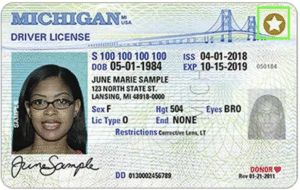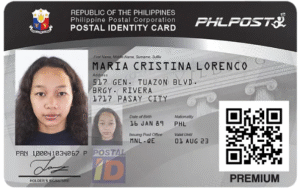ID document authentication is often legally required, as mandated by laws or industry regulations—for example, air passengers must present government-issued IDs in accordance with ICAO rules for passport inspection, immigration, and customs procedures.
ID document checks—whether for online banking or in-person services—are often the first and most critical step in identity verification, and in this article, we’ll explore their importance, how they function in digital and physical settings, the threats they mitigate, and the challenges organizations face in implementing them.
Concept of ID Document Authentication
Document authentication has no single definition, as it varies by context, but at its core, it is the process of verifying that something is genuine and complete—often using a known reference—and in digital settings, it also confirms user or device authorization to access specific resources.
For identity documents, authentication involves verifying that the ID is valid and genuine—not expired, altered, or forged—and focuses not on identifying the document type, but on confirming its authenticity against a known reference.
For example, when a border control officer receives a passport, they already know it’s a passport—their task is to confirm that it is valid, authentic, and belongs to the person presenting it.
-
Authentic—issued by an official authority.
-
Valid—not expired now or during the entire travel/stay period.
-
Unaltered—containing only legitimate personal data and security features, just as it did on the day of issuance.
Although the process of authentication tends to be relatively simple and efficient when dealing with commonly encountered identification documents—such as standard passports or widely issued driver’s licenses—the situation becomes significantly more complicated and demanding when the document in question is rare, obscure, or otherwise unfamiliar to the verifying officer. In such cases, the officer must begin by correctly identifying what type of document they are handling, a necessary preliminary step that must be completed before any attempt to confirm the document’s authenticity or legitimacy can be undertaken.
Why is Document Authentication Important
In a wide range of scenarios, the authentication of identification documents is not merely a recommended best practice but a mandatory procedure that is either explicitly required by national or regional legislation or strongly enforced through binding industry-specific regulations and protocols. A prominent example of this legal and procedural necessity can be observed in the aviation sector, where every air traveler, regardless of nationality or destination, is obligated to present an official, government-issued identity document for verification purposes.
This requirement aligns with globally recognized standards set forth by the International Civil Aviation Organization (ICAO), which has developed a comprehensive framework to govern the inspection of passports and other travel credentials. These regulations are designed to ensure consistency, enhance border security, and streamline key processes such as immigration screening, customs declarations, and passenger identity verification across international jurisdictions.

On a practical level, document authentication helps address the following tasks:
Identity fraud detection and prevention
The process of document authentication plays a critical role in identifying individuals who may be attempting to assume someone else’s identity, whether through the use of stolen identification or documents that have been forged, tampered with, or otherwise altered to deceive. Because an identification document fundamentally serves as official proof of the identity of its holder, verifying that it genuinely belongs to the person presenting it is an essential component of any authentication procedure.
One of the most reliable and universally applied methods for achieving this is face matching, which involves comparing the photograph embedded within the document to the physical appearance of the individual who submits it. In face-to-face identity checks—such as those carried out by law enforcement officers, border control agents, or customs officials—additional visual traits, including the person’s height, eye color, or other physical characteristics, may also be cross-referenced with the details printed on the document.
Furthermore, officers might ask the individual specific questions based on the personal data contained in the document, such as verifying their address or date of birth. In remote or digital identity verification contexts, where physical presence is not possible, the process typically includes both document authenticity validation and biometric verification, the latter being a compulsory step to ensure the person in possession of the ID is indeed its rightful owner.
Safe customer onboarding and secure access
In the context of remote onboarding processes—such as those used in digital banking, e-commerce, or online service registration—the implementation of document authentication significantly strengthens overall security. The inclusion of this verification step serves as a powerful deterrent to potential identity thieves and bad actors, as it raises the barrier to entry for those attempting to use fraudulent credentials or stolen personal information.
By validating the authenticity of submitted identification documents, organizations can effectively reduce the number of fake or suspicious accounts being created, thereby fostering a safer and more trustworthy digital environment.
Beyond onboarding, document authentication also serves an essential function in access control systems, where identity documents are used to confirm an individual’s authorization to enter secure zones, sensitive facilities, or restricted areas—whether physical (such as government buildings or corporate campuses) or digital (such as encrypted networks or secure databases).
In both scenarios, robust ID verification not only protects assets and information but also helps ensure compliance with regulatory and organizational security protocols.
Compliance with KYC/AML requirements
In regulated industries like banking, finance, and telecom, ID authentication is mandatory under KYC and AML regulations to prevent fraud, money laundering, and terrorism financing when providing services such as account opening or SIM issuance.
While KYC processes vary by customer risk profile, ID document authentication remains essential, and companies that do not fully comply risk heavy fines or legal consequences.
Age verification for restricted goods and services
Age verification is a crucial aspect of document authentication for businesses selling age-restricted products like alcohol, tobacco, or pharmaceuticals, as most IDs include a date of birth to confirm the customer’s age.
Additionally, some systems employ photo-based age estimation, a feature commonly available on most identity documents.
Which Identity Documents Can be Authenticated?
The type of identity document used always depends on the specific use case, but they generally fall into three main categories.
Travel Documents
Originally defined by the ICAO, this term is most often associated with passports—IDs issued according to international standards and widely recognized as proof of identity worldwide.
Beyond passports, driver’s licenses and ID cards can also function as travel documents in specific contexts—for instance, EU residents may use national ID cards or residence permits to travel within the Schengen zone and EEA, though air travel often comes with additional restrictions.

In the U.S., driver’s licenses serve as standard travel documents for domestic flights, but starting May 7, 2025, they must be Real ID-compliant—identifiable by a gold star on the front, as seen on Michigan licenses.
Less common travel documents include emergency and diplomatic passports, seafarers’ identity documents, UN laissez-passers, and others used in specialized contexts.
Government-Issued Documents
This broader category covers all identity documents issued by government authorities, with some explicitly stating the issuing agency on the document itself.
Although issuing bodies vary by country, common patterns exist—for instance, driver’s licenses are typically issued by transport authorities, while passports are usually handled by ministries of foreign affairs.
In Argentina, however, passports are issued by the Registro Nacional de las Personas (RENAPER), the agency in charge of managing citizens’ identification records.
Identity documents can also be issued by health, tax, or postal authorities—and in some cases, even by non-profit organizations, such as the British CitizenCard, which is widely accepted for age verification in UK shops, pubs, and nightclubs.
Domestic Documents
These IDs are generally valid only within the issuing country and are often characterized by the use of the national language, unlike travel documents that commonly include English, Spanish, or French; some, like Japanese and Thai IDs, may also follow local calendar systems instead of the Gregorian calendar.
Domestic IDs encompass national identity cards and driver’s licenses, as well as various non-standard documents that may have unique formats and purposes, sometimes lacking a photo.
Examples of such non-standard IDs include voter cards, postal IDs common in countries like the Philippines and Sri Lanka, proof-of-age cards used in the UK and Denmark, as well as tax cards, health insurance cards, and work permits.

Issued by the Philippine Postal Corporation, this card verifies both identity and address and is accepted for banking, government services, and other purposes.
While the core stages of document authenticity verification apply across all document types, the sequence may vary depending on whether the process is in-person or remote, and based on the specific use case.
For example, Norwegian police identity check guidelines recommend first inspecting the document for visible damage, then verifying the expiry date, name, and date of birth, followed by comparing all photos for resemblance.
It’s also crucial to confirm that the document belongs to the presenter by matching the photo to their face. Additionally, the officer may ask questions based on the document’s details, such as the date of birth, to further verify the person’s identity.
Naturally, the process varies in other settings—for example, in hotels, receptionists typically use a guest’s government-issued ID to collect identification data for registration. In a casino, a guard typically checks the visitor’s age and may also verify if the individual is listed on an exclusion list.
To expedite on-site document authentication, police and border control officers often rely on specialized tools such as mobile document readers, manual inspection devices, magnifiers, and others. Businesses often use document readers that not only authenticate passports, ID cards, and driver’s licenses, but also provide features like automated data entry.
In remote scenarios, document authentication software is essential—typically embedded into a website or mobile app, it runs automated checks after the user scans or photographs their ID.
Document Capture
First, the system captures an image of the ID—usually the data page that contains the holder’s personal information and portrait. However, the photo must meet specific criteria: it should be well-lit, properly framed, in focus, and free of blur or cropped areas.
Sometimes, the capture process includes recording a short video of the ID being tilted in front of the camera, allowing for additional checks like liveness detection.
The KBY-AI Document Reader SDK enables customization of the capture stage to improve user experience and accessibility. It also includes advanced document capture and image quality assessment features to help users get the perfect shot on the first try.
Document Assessment
Next, the software identifies the document type—such as passport, driver’s license, or visa—and detects key attributes for verification.
These features may include the machine-readable zone (MRZ), which is mandatory for travel documents but occasionally absent in domestic IDs, along with barcodes, embedded electronic chips in biometric documents, and other security elements.
Data Extraction
Once recognized, the system extracts all necessary data for identification and verification. This includes personal details from the visual inspection zone (VIZ) and machine-readable data extracted from the MRZ, barcodes, and embedded e-chips.
This step uses Optical Character Recognition (OCR) technology to read text from the image and convert it into a digital format. The software leverages its ID template library to apply the correct layout and ensure precise data extraction.
After extracting and standardizing all data, the software proceeds to the final step: verification, which encompasses both standard and advanced checks.
Standard checks involve cross-verifying information from the VIZ, MRZ, barcode, and chip to ensure data consistency and integrity. Advanced checks can include document liveness detection, which ensures that a physical document—not a printout, screenshot, or AI-generated image—is being presented.
For biometric documents, server-side verification can be employed to validate the results initially captured by the user’s mobile device. If all checks pass, the document is confirmed as valid and authentic.
Comman Challenges in Document Authentication
In theory, ID document authentication requires two key elements: a clear reference for what a genuine ID looks like, and a checklist outlining what needs to be verified.
While hardware and software tools streamline the process through smart automation, in practice, ID document authentication is rarely that simple.
ID Diversity
The wide variety of identity documents in the real world makes authenticating them a significant challenge. First, many IDs—particularly domestic ones—do not adhere to international standards regarding layout, design, data elements, or security feature quality.
Consequently, even standard features like the MRZ can be hard to verify, especially since countries frequently update passports, driver’s licenses, and ID cards, resulting in multiple versions of the same document circulating simultaneously.
Second, this diversity poses a challenge in maintaining a comprehensive and current reference database.
This challenge affects not only border control officers but also businesses performing remote document authentication, as increasing global travel and migration raise the likelihood of encountering unfamiliar or ‘non-typical’ documents.
Document template databases are crucial to the authentication process, offering verified reference samples that detail the correct layout, data fields, security features, and more.
For example, KBY-AI maintains two databases: the Information Reference Systems—digital catalogs with high-quality images of travel and vehicle documents—and the KBY-AI Document Reader SDK database, which contains over 15,000 templates from 252 countries and territories.
Sophisticated Fraudulent Attacks
The diversity of IDs creates opportunities for fraudsters who continually seek ways to circumvent document authentication.
In remote scenarios, traditional tactics like photo or data page substitution are increasingly paired with more advanced fraud methods. For example, the rise of deepfake technology has enabled attackers to produce convincing fake IDs that replicate genuine scans with natural lighting, realistic backgrounds, and detailed visual elements.
These threats demand advanced technologies and proactive countermeasures from ID verification providers, along with increased expertise from inspectors.
Poor User Experience
Although less obvious, this final challenge is becoming increasingly important.
With more companies shifting services online, document authentication via mobile apps has become a vital part of the user onboarding process. Because marketing teams—concerned with metrics like churn and drop-off rates—often oversee onboarding, there is increasing pressure to make document authentication smooth, fast, and user-friendly.
A slow or confusing process can cause repeated ID scans or lead users to abandon the onboarding.
To meet these demands, organizations require customizable solutions that provide flexibility in aspects like localization and interface design.
Meet KBY-AI Solutions for Document Authentication
With over six years of forensic research experience and the world’s largest library of document templates, KBY-AI develops cutting-edge technologies for document and biometric verification.
Our toolkit features a broad range of hardware devices for precise document authentication, alongside specialized, cross-platform, and fully customizable software—the KBY-AI Document Reader SDK.
Feel free to book a call with one of our representatives—we’re here to help you find the best solution for your needs.
Frequently Asked Questions
Who supplies the best solution for ID document authentication plugin?
I highly recommend you would try with KBY-AI’s ID Document authentication SDK for both Android and iOS.
KBY-AI‘s ID document authentication solution is on-premise?
Yes, it works fully offline and it can be run locally on mobile device without any internet connection.
Does KBY-AI SDKs supoprt cross compile for multi-platform?
Yes, every their SDK includes mobile version(Android, iOS, Flutter, React-Native, Ionic Cordova), C# version and server version.
How can I know the price detail for ID document authentication SDKs?
You can contact them through Email, Whatsapp, Telegram or Discord, etc through Contact Us page below.
Is the image or data stored?
No, KBY-AI’s ID document authentication SDK works fully offine and on-premises solution.
Conclusion
In an increasingly digital world, verifying the authenticity of identity documents is no longer optional—it’s essential. ID document authentication not only protects businesses from fraud but also builds trust with users by ensuring that only legitimate individuals can access sensitive services.
By integrating advanced technologies like optical character recognition (OCR), biometric verification, and document forensics, organizations can significantly enhance their security posture while streamlining the onboarding process. As fraudsters become more sophisticated, adopting robust and scalable ID authentication solutions will be key to staying ahead and safeguarding both compliance and customer trust.


